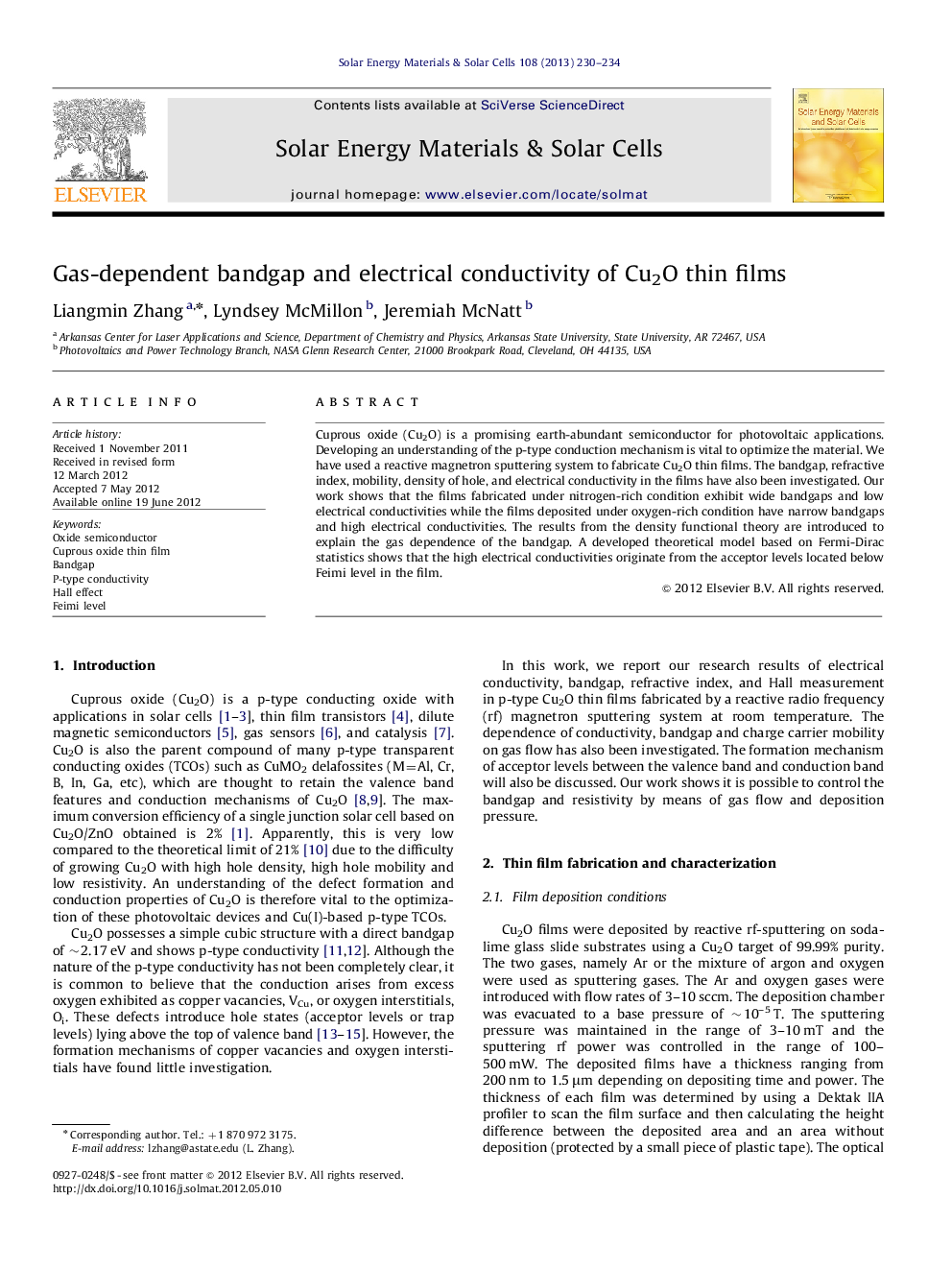| Article ID | Journal | Published Year | Pages | File Type |
|---|---|---|---|---|
| 78703 | Solar Energy Materials and Solar Cells | 2013 | 5 Pages |
Cuprous oxide (Cu2O) is a promising earth-abundant semiconductor for photovoltaic applications. Developing an understanding of the p-type conduction mechanism is vital to optimize the material. We have used a reactive magnetron sputtering system to fabricate Cu2O thin films. The bandgap, refractive index, mobility, density of hole, and electrical conductivity in the films have also been investigated. Our work shows that the films fabricated under nitrogen-rich condition exhibit wide bandgaps and low electrical conductivities while the films deposited under oxygen-rich condition have narrow bandgaps and high electrical conductivities. The results from the density functional theory are introduced to explain the gas dependence of the bandgap. A developed theoretical model based on Fermi-Dirac statistics shows that the high electrical conductivities originate from the acceptor levels located below Feimi level in the film.
► The bandgap and electrical conductivity of Cu2O films vary with different gas flows. ► This work provides a possible method to control the bandgap and conductivity of the films. ► Theoretical models are introduced to explain the bandgap and conductivity that vary with gas condition. ► Fermi–Dirac statistics is used to investigate the positions of the acceptor levels formed in the films.
